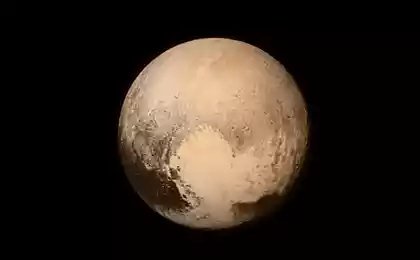189
What failed to reform Stolypin
What failed to reform Stolypin was the settlement system. And with it the real ownership of the land. The right to own land, its disposal. Yes, at least the knowledge of the boundaries of their land, strange as it may not have been in the early 20th century. As a matter of fact, many do not now (remember the topic with the “allocation of land shares in nature”).
Based on the experience and work of theorists describing the settlement of peasants in Western Europe, he hoped to introduce a farm system of settlement.
Within the Russian Empire, there were territories in which the farms were already present: Finland, the Baltic Territory, southern Russia and Siberia. But the basis of land use was settlements with a community, re-bandage and mutual responsibility.
As you know, the reform has failed. And the interests of advanced agronomic science clashed in this matter with the interests, not as one might think of a century-old communal culture and philosophy, but with the interests of the fiscal Russian department.
Stolypin drew attention to the fact that in the 1830s and 1840s in the southern provinces (Tavricheska, Ekaterinoslav, etc.) after the abolition of several thousand farms on state lands, peasants were forcibly taken to one village built according to a certain plan, born in the chancery. This was done for the convenience of collecting taxes, which were provided by the mutual responsibility of the community.
During the enlargement, settlements of 6 thousand souls were created. In such large settlements there could be no adjoinment of cultivated land to the peasant’s house. As a result, the length of the path of the peasant to his land from the house was enormously large, given the many walks a day that must be made when transporting hay or exporting manure, for example.
The idea of a fair distribution of near and far lands, better and worse lands among the houses belonging to the community was based on grotto and communal redistribution. As Kofod A.A. correctly observed, this was the approach of doing equally bad things to everyone. In practice, the temporary user of the strip did not think about the long-term improvement in the quality of this site, because it went to someone else at the next redistribution. The constant exchange of land stood as a barrier to the long-term improvement of soil fertility.
The shornet led to predatory exploitation of the allotment received for a time without restoring its fertility, besides, it was located far from the house and livestock yard. Transportation of manure, tools and crops took an unreasonably long time.
The circular responsibility that ensured the fiscal obligations of all placed a heavy burden on the more disciplined and wealthy members of the community, thereby reducing its wealth.
As Stolypin would now say, the expert on farms was the land developer Kofod.
Kofod made a good and detailed work on the farm settlement system. On the cover of the book are printed the initials A.A., Kofod. But from history I know only one person of that name who advised Stolypin. This is a Dane Karl Andreas Kofod (in 1892 he took Russian citizenship). The fact is that in the Russian turnover of names he became Andrei Andreyevich Kofod.
There is such a moment in the biography of this man when, after numerous attempts to combat communality and land cavity in 1901, he finds Russian villages in Mogilev, which were built on the peasants’ own initiative. Kofod begins extensive work to disseminate this experience.
The brochure Khutorskoye Settlement (1907) was published with a circulation of 500,000 (!) copies and was widely distributed throughout the country.
It must be admitted that one of the most original techniques was the excursions of peasants at state expense to the territories that had already been deployed on the farm. (this is how he used the reception with the “study of best practices”). However, excursions were obtained only when the peasants went without the escort of officials!
But either there was not enough time (the year 1917 came), or for other reasons - it was not possible to expand the land on the farms.
So what is the outcome of this story? Stolypin failed (didn't manage?) to reform settlement, communal land ownership, circular bailouts and slicing of land.
As a result, the transition from three-pole to long-term crop rotations was not made. This is how the social and fiscal system prevented a step in agronomic culture.
Source: method-estate.com
Based on the experience and work of theorists describing the settlement of peasants in Western Europe, he hoped to introduce a farm system of settlement.
Within the Russian Empire, there were territories in which the farms were already present: Finland, the Baltic Territory, southern Russia and Siberia. But the basis of land use was settlements with a community, re-bandage and mutual responsibility.
As you know, the reform has failed. And the interests of advanced agronomic science clashed in this matter with the interests, not as one might think of a century-old communal culture and philosophy, but with the interests of the fiscal Russian department.
Stolypin drew attention to the fact that in the 1830s and 1840s in the southern provinces (Tavricheska, Ekaterinoslav, etc.) after the abolition of several thousand farms on state lands, peasants were forcibly taken to one village built according to a certain plan, born in the chancery. This was done for the convenience of collecting taxes, which were provided by the mutual responsibility of the community.
During the enlargement, settlements of 6 thousand souls were created. In such large settlements there could be no adjoinment of cultivated land to the peasant’s house. As a result, the length of the path of the peasant to his land from the house was enormously large, given the many walks a day that must be made when transporting hay or exporting manure, for example.
The idea of a fair distribution of near and far lands, better and worse lands among the houses belonging to the community was based on grotto and communal redistribution. As Kofod A.A. correctly observed, this was the approach of doing equally bad things to everyone. In practice, the temporary user of the strip did not think about the long-term improvement in the quality of this site, because it went to someone else at the next redistribution. The constant exchange of land stood as a barrier to the long-term improvement of soil fertility.
The shornet led to predatory exploitation of the allotment received for a time without restoring its fertility, besides, it was located far from the house and livestock yard. Transportation of manure, tools and crops took an unreasonably long time.
The circular responsibility that ensured the fiscal obligations of all placed a heavy burden on the more disciplined and wealthy members of the community, thereby reducing its wealth.
As Stolypin would now say, the expert on farms was the land developer Kofod.
Kofod made a good and detailed work on the farm settlement system. On the cover of the book are printed the initials A.A., Kofod. But from history I know only one person of that name who advised Stolypin. This is a Dane Karl Andreas Kofod (in 1892 he took Russian citizenship). The fact is that in the Russian turnover of names he became Andrei Andreyevich Kofod.
There is such a moment in the biography of this man when, after numerous attempts to combat communality and land cavity in 1901, he finds Russian villages in Mogilev, which were built on the peasants’ own initiative. Kofod begins extensive work to disseminate this experience.
The brochure Khutorskoye Settlement (1907) was published with a circulation of 500,000 (!) copies and was widely distributed throughout the country.
It must be admitted that one of the most original techniques was the excursions of peasants at state expense to the territories that had already been deployed on the farm. (this is how he used the reception with the “study of best practices”). However, excursions were obtained only when the peasants went without the escort of officials!
But either there was not enough time (the year 1917 came), or for other reasons - it was not possible to expand the land on the farms.
So what is the outcome of this story? Stolypin failed (didn't manage?) to reform settlement, communal land ownership, circular bailouts and slicing of land.
As a result, the transition from three-pole to long-term crop rotations was not made. This is how the social and fiscal system prevented a step in agronomic culture.
Source: method-estate.com






















